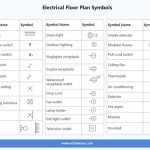How To Make Fertilizer At Home For Indoor Plants and Flowers
Maintaining healthy and vibrant indoor plants and flowers often necessitates supplemental feeding through fertilization. While commercially produced fertilizers are readily available, creating fertilizer at home offers a cost-effective and environmentally conscious alternative. This approach also allows for greater control over the ingredients, enabling customization to meet the specific needs of different plant species.
Homemade fertilizers utilize readily accessible organic materials, transforming kitchen scraps and yard waste into nutrient-rich solutions and soil amendments. The process is relatively simple and requires minimal investment in specialized equipment. Understanding the basic principles of plant nutrition and the nutrient content of various organic materials is crucial for formulating effective homemade fertilizers.
Plant nutrition revolves around three primary macronutrients: nitrogen (N), phosphorus (P), and potassium (K). Nitrogen promotes leaf and stem growth, phosphorus supports root development and flowering, and potassium contributes to overall plant health and disease resistance. The relative proportions of these nutrients are indicated by the N-P-K ratio displayed on commercial fertilizer labels. While precise measurement might be challenging with homemade fertilizers, understanding the general nutrient profile of the ingredients used is important.
Beyond the macronutrients, plants also require micronutrients such as iron, zinc, manganese, and copper. These are needed in smaller quantities but are equally essential for various physiological processes. Many organic materials naturally contain a balance of both macro- and micronutrients, making them ideal for homemade fertilizer formulations.
Understanding Primary Ingredients for Homemade Fertilizer
Several common household materials can be effectively utilized as ingredients for homemade plant fertilizers. These can be broadly categorized into nitrogen-rich, phosphorus-rich, and potassium-rich sources. It is important to note that the exact nutrient content can vary depending on the origin and processing of the material.
Coffee grounds are a readily available source of nitrogen. They are slightly acidic and can be beneficial for acid-loving plants such as azaleas, camellias, and blueberries. Coffee grounds can be added directly to the soil as a slow-release fertilizer or steeped in water to create a liquid fertilizer. When using coffee grounds directly in the soil, it's advisable to allow them to cool and dry slightly to prevent mold growth. Do not use coffee grounds on seedlings or very young plant, as it could inhibit growth.
Eggshells are rich in calcium, a secondary macronutrient that is essential for cell wall development and overall plant structure. Calcium also helps regulate nutrient uptake and can improve soil drainage. Eggshells should be thoroughly rinsed and dried before being crushed into a fine powder. The powder can then be sprinkled directly onto the soil or added to the compost pile. For faster nutrient release, eggshells can be baked at a low temperature to make them more brittle and easier to grind. Soaking crushed eggshells in vinegar for a few days will also create a calcium-rich solution suitable for foliar feeding.
Banana peels are an excellent source of potassium. They also contain phosphorus and various micronutrients. Banana peels can be buried directly in the soil near the base of the plant, composted, or steeped in water to create a liquid fertilizer. To prepare banana peel tea, soak banana peels in water for several days, then dilute the resulting solution with water before using it to water plants. This method allows for the rapid release of potassium into the soil.
Epsom salts (magnesium sulfate) provide magnesium, another secondary macronutrient that is crucial for chlorophyll production and enzyme activation. A diluted solution of Epsom salts can be used to address magnesium deficiency in plants, which is often indicated by yellowing leaves. Use approximately one tablespoon of Epsom salts per gallon of water and apply as a foliar spray or soil drench.
Wood ash can be used to improve soil pH and provides potassium, calcium, and various trace elements. Wood ash is alkaline and should be used sparingly, particularly in soils that are already alkaline. It is best suited for plants that prefer slightly alkaline soil conditions, such as tomatoes and peppers. Only use ash from untreated wood; avoid ash from painted or treated wood, charcoal briquettes, or lighter fluid, as these may contain harmful chemicals.
Compost tea is a liquid fertilizer made by steeping compost in water. It contains a wide range of nutrients and beneficial microorganisms that can improve plant health and disease resistance. To make compost tea, place a handful of compost in a mesh bag or old sock and immerse it in a bucket of water for several days. Stir the mixture occasionally to aerate it. The resulting liquid can then be diluted with water and used to water plants or as a foliar spray. It's best to use high-quality compost for best results.
Formulating Homemade Fertilizer Solutions
Creating effective homemade fertilizer solutions requires careful consideration of the nutrient needs of the specific plants being fertilized. Understanding the general nutrient profile of various organic materials allows for the formulation of balanced fertilizer blends.
For general-purpose fertilizer, a combination of coffee grounds, eggshell powder, and banana peel tea can provide a good balance of nitrogen, phosphorus, potassium, and calcium. Mix a small amount of coffee grounds and eggshell powder directly into the soil around the plants, and water with diluted banana peel tea. The frequency of application will depend on the specific plant species and its growth rate.
For flowering plants, a fertilizer solution that is higher in phosphorus and potassium can promote bloom production. This can be achieved by supplementing the general-purpose fertilizer with bone meal, which is a rich source of phosphorus, or by increasing the concentration of banana peel tea. Be mindful of using too much bone meal, as it can make the soil too basic, especially for acid-loving plants.
For leafy green plants, a fertilizer solution that is higher in nitrogen can promote leafy growth. This can be achieved by increasing the amount of coffee grounds used or by adding a small amount of grass clippings to the soil. Grass clippings should be thoroughly dried before being added to the soil to prevent mold growth and unpleasant odor.
Dilution is a critical aspect of using homemade fertilizers. Concentrated fertilizer solutions can damage plant roots and leaves. Always dilute homemade fertilizers with water before applying them to plants. A general guideline is to dilute the fertilizer solution to half or quarter strength. Observe the plants carefully after applying the fertilizer and adjust the concentration as needed. If the plant shows signs of nutrient burn, such as browning or yellowing of the leaves, reduce the concentration or frequency of application.
Application Methods and Considerations
Homemade fertilizers can be applied to plants in several ways, depending on the type of fertilizer and the needs of the plants. The most common methods include soil application and foliar application. It is important to consider factors such as soil type, plant species, and environmental conditions when determining the best application method and frequency.
Soil application involves applying the fertilizer directly to the soil around the base of the plant. This method is suitable for both slow-release and liquid fertilizers. For slow-release fertilizers, such as coffee grounds and eggshell powder, gently incorporate the fertilizer into the topsoil. For liquid fertilizers, such as banana peel tea and compost tea, water the plants with the diluted solution. Avoid overwatering, as this can leach nutrients from the soil.
Foliar application involves spraying the fertilizer solution directly onto the leaves of the plant. This method allows for rapid absorption of nutrients and is particularly useful for addressing nutrient deficiencies. Use a fine-mist sprayer to ensure even coverage of the leaves. Apply the fertilizer solution in the early morning or late evening to avoid leaf burn from the sun. Be cautious when using foliar sprays, as some plants are sensitive to certain ingredients. Test the fertilizer solution on a small area of the plant before applying it to the entire plant.
Regularly monitor the plants for signs of nutrient deficiency or toxicity. Nutrient deficiencies can manifest as yellowing leaves, stunted growth, or poor flowering. Nutrient toxicity can manifest as browning or curling leaves, or the accumulation of salts on the soil surface. Adjust the fertilizer regimen as needed based on the observed symptoms. Conduct soil tests periodically to assess the nutrient levels and pH of the soil.
When using homemade fertilizers, it's crucial to maintain a balanced approach. Over-fertilizing can be just as harmful as under-fertilizing. Applying too much fertilizer can lead to nutrient toxicity, salt buildup in the soil, and environmental pollution. Start with small doses and gradually increase the amount as needed. Always err on the side of caution and prioritize the health and well-being of the plants.
Remember that homemade fertilizers are not a substitute for good soil health and proper plant care. Proper watering, adequate sunlight, and appropriate pot size are all essential for healthy plant growth. Use homemade fertilizers as a supplement to these basic care practices, rather than as a replacement.
Homemade fertilizers can be a rewarding and sustainable way to nourish indoor plants and flowers. By understanding the nutrient needs of plants and utilizing readily available organic materials, it is possible to create effective fertilizer solutions that promote healthy growth and vibrant blooms. Consistent observation and adjustments are essential for achieving optimal results with homemade fertilizers.
:max_bytes(150000):strip_icc()/make-your-own-fertilizer-1388159-hero-025e07a9b96840568b5eb5050f4bab10.jpg?strip=all)
How To Make Your Own Fertilizer

Homemade Plant Food 7 Easy Natural Fertilizer Recipes An Off Grid Life

Homemade Plant Food 7 Easy Natural Fertilizer Recipes An Off Grid Life

How To Fertilize Your Indoor Plants

Secret Sauce For Happy Ferns Carmen Johnston Gardens

Diy Indoor Houseplant Fertilizer How To Make Plant Food At Home Plantfood Greenthumb

Diy Indoor Houseplant Fertilizer How To Make Plant Food At Home Plantfood Greenthumb

Homemade Plant Food 7 Easy Natural Fertilizer Recipes An Off Grid Life

How To Make Homemade Fertilizer Using Common Kitchen And Garden Scraps

Homemade Plant Food 7 Easy Natural Fertilizer Recipes An Off Grid Life








